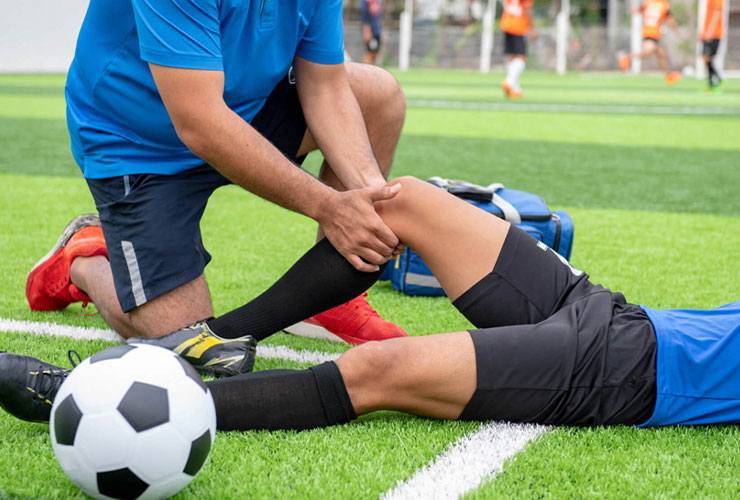Sports injuries can be a significant setback for athletes, both amateur and professional. The pain and limitations they impose can hinder performance and disrupt one’s passion for the game. Fortunately, arthroscopy surgery has emerged as a game-changer in the world of sports medicine. In this comprehensive guide, we will delve into the intricacies of arthroscopy surgery for sports injuries, from understanding the procedure to addressing common questions. Whether you’re a dedicated athlete or simply someone seeking a pain-free life, this article will shed light on this transformative medical technique.
Table of Contents
- What Is Arthroscopy Surgery?
- Common Sports Injuries Treated
- The Arthroscopy Procedure
- Recovery and Rehabilitation
- Benefits of Arthroscopy
- Is Arthroscopy Right for You?
- Questions and Answers
- Conclusion
What Is Arthroscopy Surgery?
Arthroscopy is a minimally invasive surgical procedure that allows orthopedic surgeons to diagnose and treat various joint-related issues, including sports injuries. This technique involves inserting a small camera, known as an arthroscope, into the affected joint through a tiny incision. The camera provides real-time visuals of the joint’s interior, allowing the surgeon to assess the damage and perform necessary repairs.
Common Sports Injuries Treated
Arthroscopy is particularly effective in addressing a wide range of sports-related injuries, such as:
- Meniscus Tears: Common in sports involving sudden stops and turns, meniscus tears can lead to pain and limited mobility.
- ACL Tears: Anterior cruciate ligament (ACL) tears are prevalent among athletes and require surgical intervention for a full recovery.
- Rotator Cuff Injuries: These shoulder injuries can affect athletes in sports like baseball, tennis, and swimming.
- Cartilage Damage: Repetitive stress on joints can result in cartilage damage, a condition that arthroscopy can repair.
The Arthroscopy Procedure
The arthroscopy procedure is performed in a specialized surgical suite or hospital. Here’s what you can expect:
- Preparation: You’ll receive anesthesia to ensure you’re comfortable and pain-free during the surgery.
- Incision: A small incision is made near the affected joint, through which the arthroscope is inserted.
- Exploration: The surgeon examines the joint’s interior using the arthroscope’s live images.
- Treatment: If necessary, the surgeon will make additional small incisions to introduce specialized tools for repairs.
- Closure: Once the procedure is complete, the incisions are closed with sutures or adhesive strips.
Recovery and Rehabilitation
Recovery after arthroscopy varies depending on the extent of the procedure and the individual. However, here are some general guidelines:
- Rest: You’ll need to rest the operated joint and avoid strenuous activities for a specified period.
- Physical Therapy: Physical therapy is often recommended to regain strength and mobility.
- Pain Management: Your doctor will prescribe pain medication to keep you comfortable during recovery.
- Follow-Up: Regular follow-up appointments are crucial to monitor your progress and address any concerns.
Benefits of Arthroscopy
Arthroscopy offers numerous advantages over traditional open surgery:
- Minimal Scarring: The small incisions result in minimal scarring and a quicker recovery.
- Reduced Pain: Patients often experience less pain compared to open surgery.
- Quicker Recovery: The minimally invasive nature of arthroscopy typically leads to a faster return to normal activities.
- Precision: Surgeons can visualize and treat the problem area with precision.
Is Arthroscopy Right for You?
Arthroscopy is a highly effective option for many individuals with sports injuries. However, the suitability of this procedure depends on several factors, including the type and severity of the injury, your overall health, and your surgeon’s recommendations. To determine if arthroscopy is right for you, consult with an orthopedic specialist who can assess your condition and provide personalized guidance.
Questions and Answers
No, arthroscopy is most effective for certain types of sports injuries, such as those involving joints and soft tissues. It may not be suitable for all injuries, so a thorough evaluation by a medical professional is essential.
Recovery times can vary depending on the individual and the specific procedure. In some cases, patients can resume normal activities within a few weeks, while others may take several months for a full recovery.
Like any surgical procedure, arthroscopy carries some risks, including infection, bleeding, and injury to surrounding tissues. However, these risks are relatively low, and complications are rare when performed by a skilled surgeon.
Physical therapy is often recommended to help restore strength and flexibility to the injured joint. Your surgeon will determine the appropriate rehabilitation plan based on your specific condition.
In many cases, patients experience a significant improvement in joint mobility after arthroscopy. However, the extent of recovery depends on various factors, including the nature of the injury and adherence to rehabilitation exercises.
Conclusion
Arthroscopy surgery for sports injuries has revolutionized the way we treat joint-related problems in athletes and active individuals. Its minimally invasive nature, coupled with precise diagnosis and treatment, offers hope to those facing the challenges of sports-related injuries. If you’re dealing with joint pain or an injury that’s affecting your performance, consider consulting with an orthopedic specialist to explore the potential benefits of arthroscopy. With the right treatment and rehabilitation, you can look forward to getting back in the game and pursuing your passion for sports with confidence.
Remember, the road to recovery begins with knowledge and action. Take the first step towards a pain-free, active life by seeking expert advice on arthroscopy surgery.

